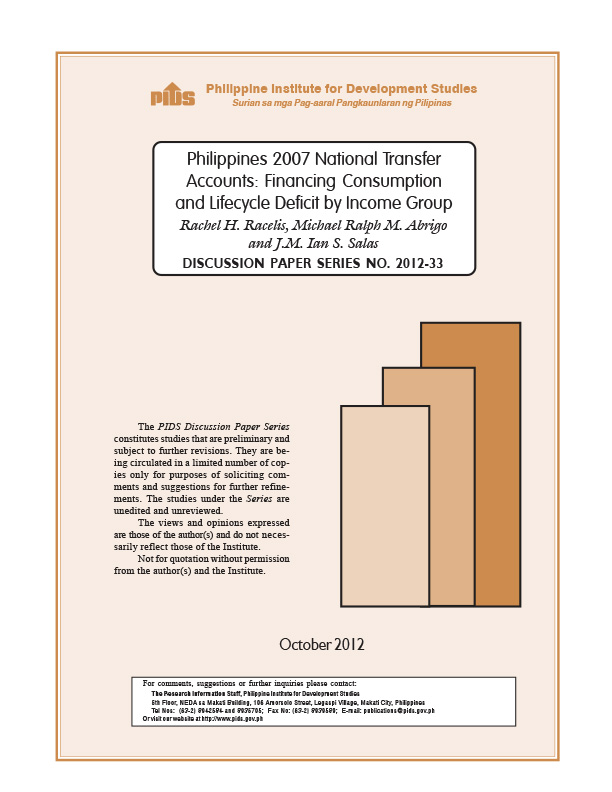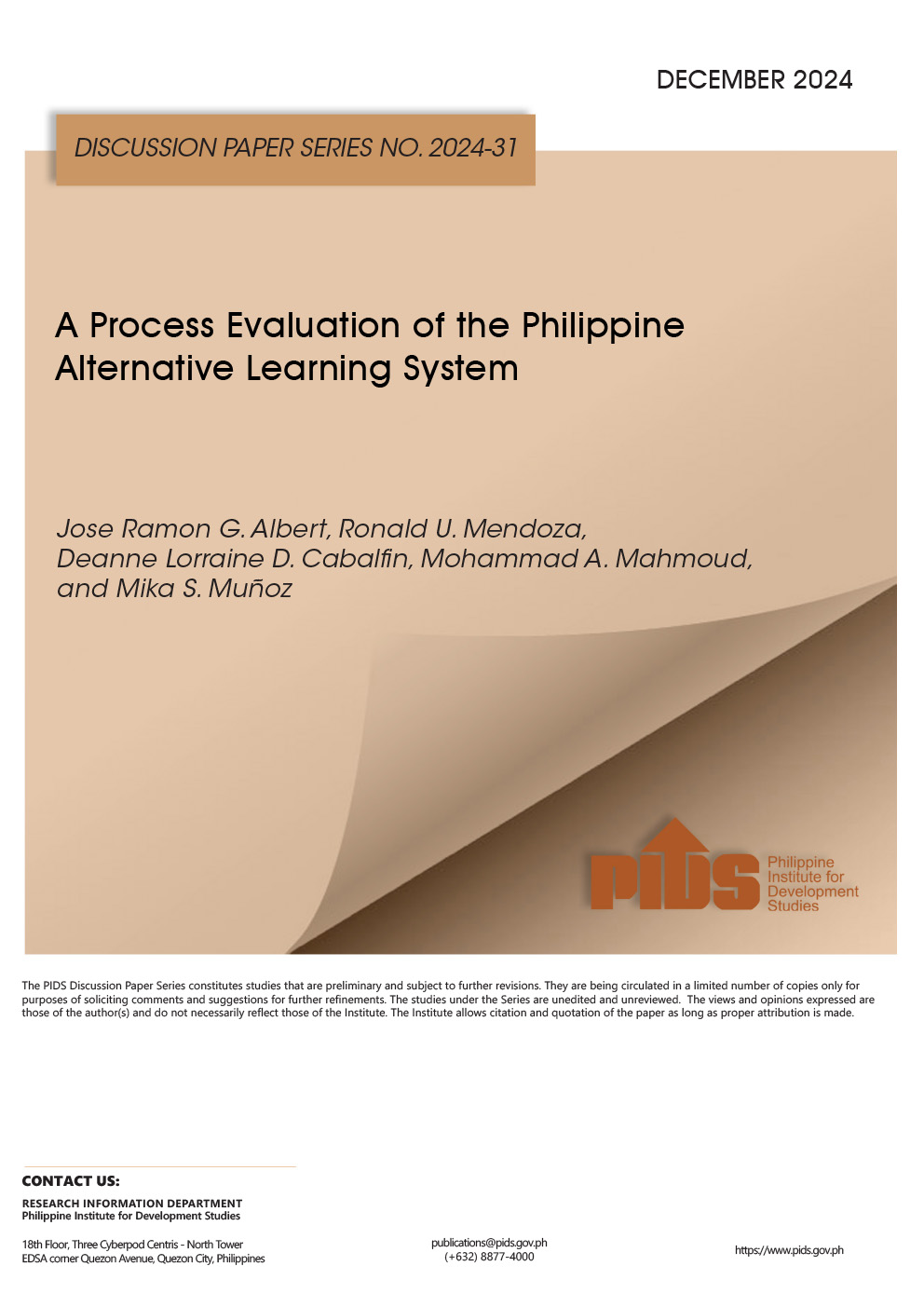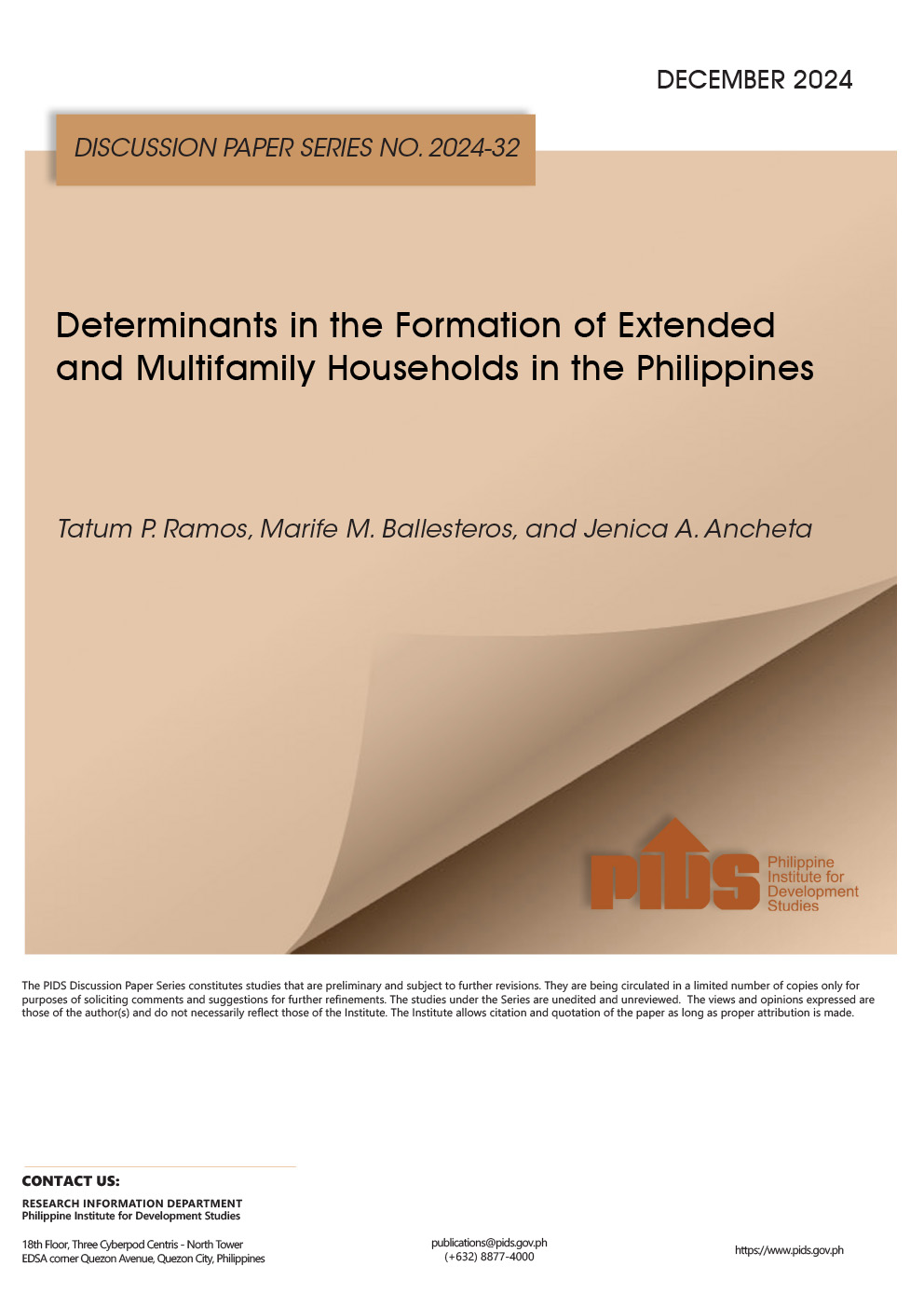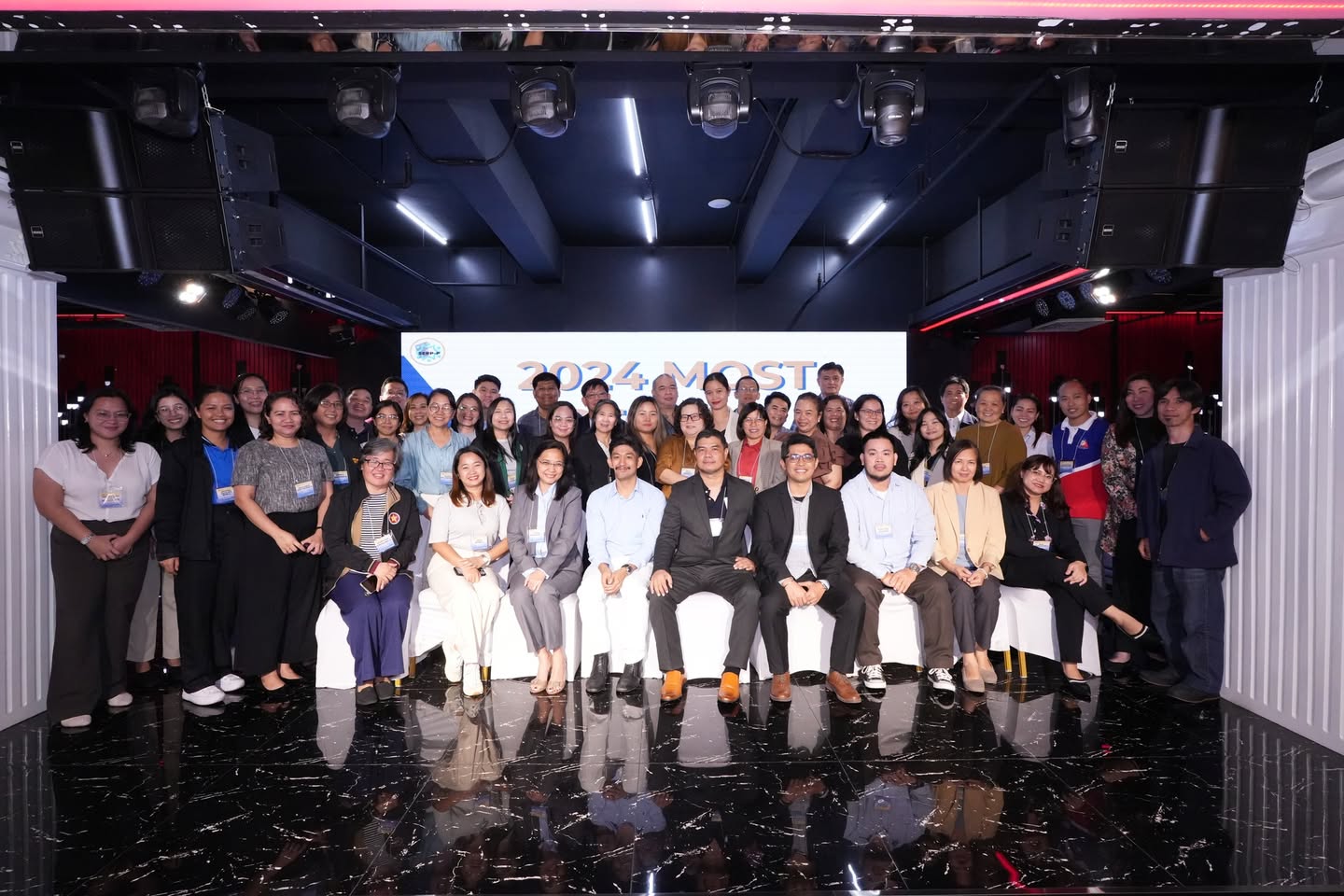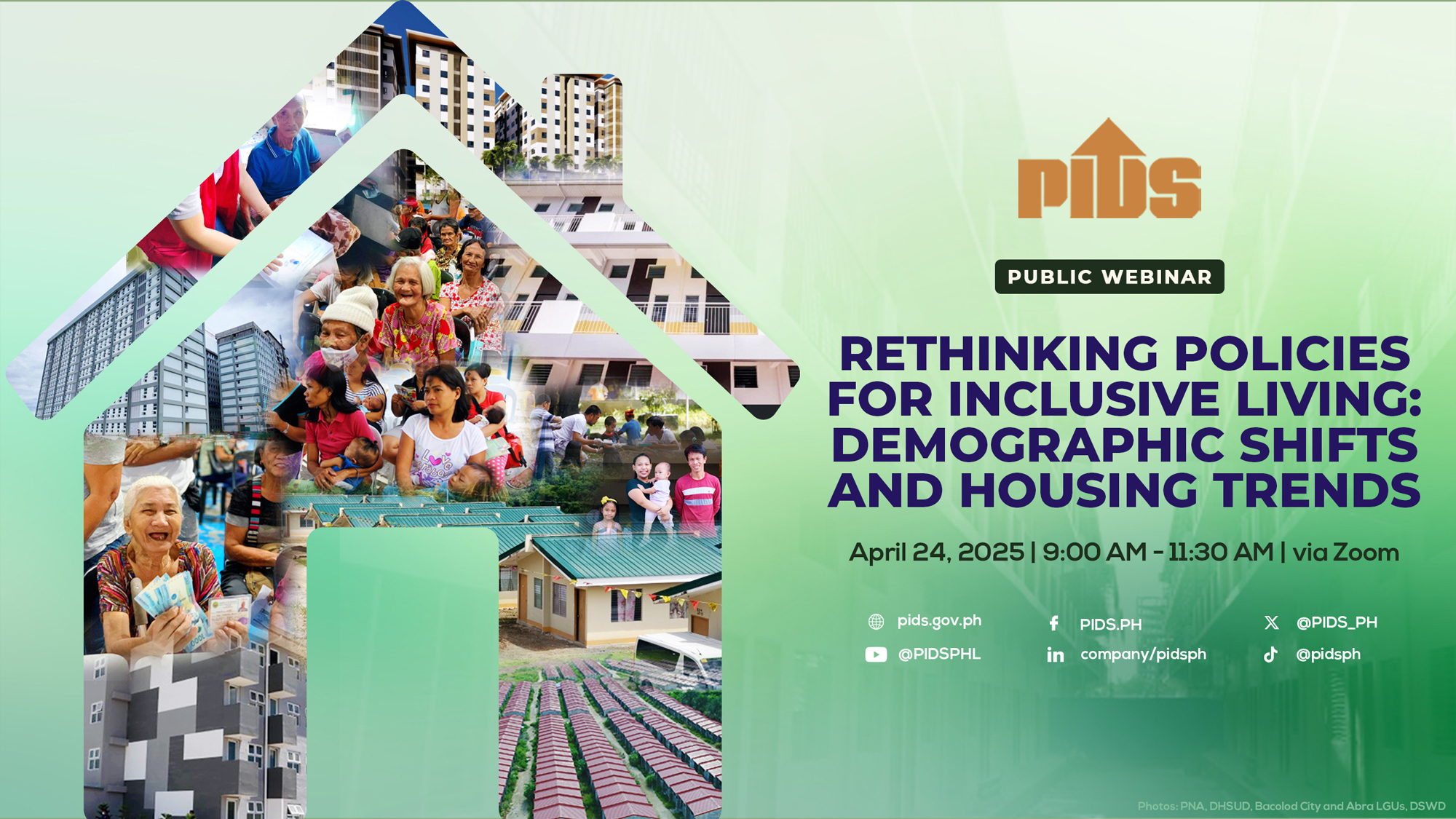The NTA flow accounts for the Philippines for the year 2007 include not only national level estimates but also estimates by income group. Three income groups are defined, referred to as income terciles. This paper examines the financing of consumption by income group. One source of financing is own labor income. But for age groups whose labor income is not sufficient to cover their consumption, mainly the young and elderly, the difference or the lifecycle deficit is financed by resources reallocated between age groups. The income groups differ in the manner the lifecycle deficits are financed.
Some key findings include: (1) for the young dependent age group deficit is financed by public alongside private transfers for the bottom tercile while it is almost entirely private transfers for the top tercile; (2) for the young elderly (under 79 years old) financing of deficit is by asset reallocation and a small proportion by public transfers for the bottom and middle terciles, and by asset reallocation and private transfers for the top tercile; and (3) for the older elderly (age 79 or older) deficit is financed by public transfers (small proportion), private transfers, and asset reallocation for the bottom and middle terciles, and by private transfers and asset reallocation for the top tercile.
Citations
This publication has been cited 2 times
- Racelis, Rachel H.. 2016. Economic gain, age structure transition, and population groups in the Philippines. Discussion Papers DP 2016-32. Philippine Institute for Development Studies.
- Racelis, Rachel H. et. al. 2016. Consumption, labor income, and lifecycle deficit by urban-rural residence and by income group: Philippines NTA 1991, 1999, and 2011. Discussion Papers DP 2016-31. Philippine Institute for Development Studies.

